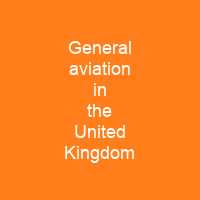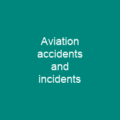General Aviation in the United Kingdom: A Vital Sector
Imagine a world where flying isn’t just for commercial airlines and military operations; it’s also about personal transport, recreation, and business. That’s exactly what General Aviation (GA) in the UK represents.
The Scope of GA Operations
General aviation encompasses a wide range of activities involving various types of aircraft—from corporate jets to rotorcraft, fixed-wing planes, gliders, and even lighter-than-air craft. This diverse fleet operates from over 1,800 aerodromes across the country, with 96% of these being engaged in GA operations.
Key Statistics
The UK’s civil aircraft fleet includes around 21,000 registered planes, with a staggering 1.25 to 1.35 million hours flown annually by the GA sector. There are over 28,000 Private Pilot Licence holders, 10,000 certified glider pilots, and 19,000 professionals holding various licences.
Regulation and Licensing
The Civil Aviation Authority (CAA) oversees the GA sector, focusing on airworthiness standards and pilot licensing. The CAA ensures that all aircraft meet specific requirements to receive a Certificate of Airworthiness, while pilots must obtain licenses such as the Private Pilot Licence (PPL).
Historical Context
The journey of GA in the UK began with the introduction of the de Havilland DH.60 Moth in 1925, which revolutionized light aviation and led to the formation of over 60 flying clubs by 1939. After World War II, facilities became available again, paving the way for the establishment of GA as we know it today.
Modern Developments
The introduction of business jets like the Learjet 23 in 1964 popularized corporate aviation, while microlights and amateur-built aircraft have seen significant growth. Today, GA operates a range of aircraft for public transport, aerial work, and private flying, including balloons, airships, gliders, helicopters, and business jets.
Impact on the Economy
The sector employs nearly 12,000 people and contributes £1.4 billion to the UK economy, making it roughly seven percent of the size of the Civil Aviation Industry. Despite challenges, GA remains a vital part of the aviation landscape in the UK.
Challenges and Opportunities
The growth in Commercial Air Transport has eroded the operational freedom of GA both in the air and on the ground at larger airports. Difficulty with access to these airports is compounded by a decline in the number of aerodromes generally, leading to significant increases in charges for GA aircraft.
Regulatory Environment
The CAA and EASA (European Aviation Safety Agency) regulate airworthiness, pilot qualification, equipment, and movement rules. The CAA works within the JAA framework, while EASA is the central EU regulator for legislating airworthiness and environmental regulation.
Conclusion
The future of GA in the UK hinges on addressing these challenges while leveraging opportunities to grow and thrive. As we continue to navigate the complexities of airspace management and regulatory frameworks, one thing remains clear: General Aviation is not just a sector; it’s an integral part of our national identity and economy.

You want to know more about General aviation in the United Kingdom?
This page is based on the article General aviation in the United Kingdom published in Wikipedia (retrieved on December 4, 2024) and was automatically summarized using artificial intelligence.







